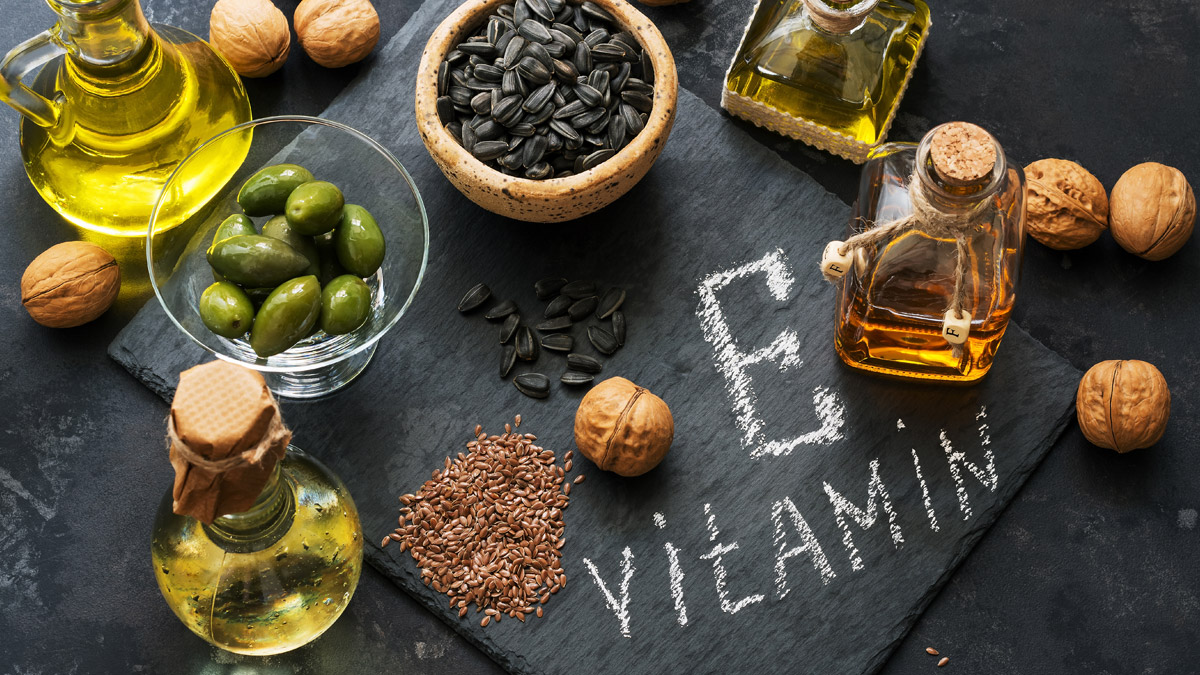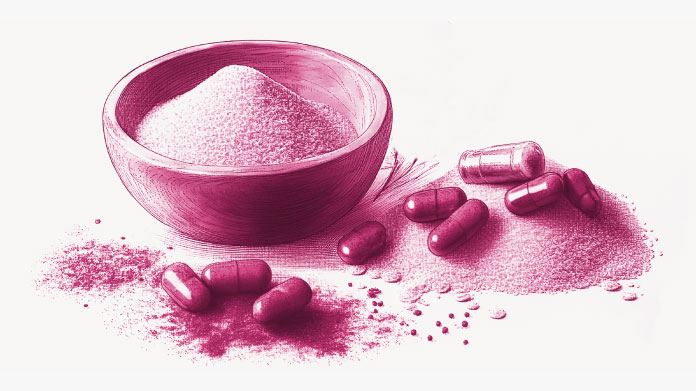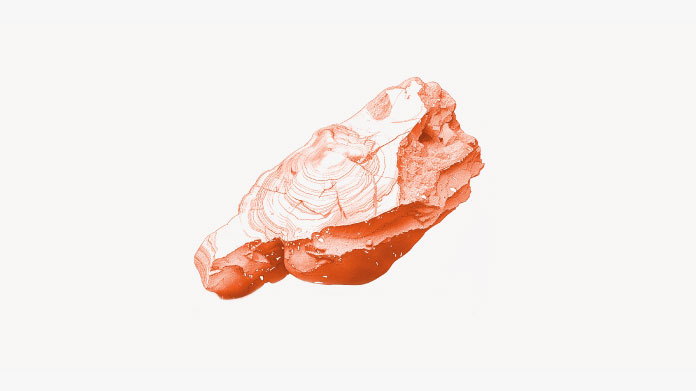Top 10 foods rich in vitamin E
Vitamin E deficiency is rare, but you should still focus on these great foods to ensure that you’re getting enough vitamin E. Here are our top 10 foods rich in vitamin E.

Wheat germ oil
With nearly 150 mg of vitamin E per 100 g, wheat germ oil tops all food categories in vitamin E content!
How? Use wheat germ oil instead of another oil when you cook. Wheat germ oil supplements (in capsules) are also a good option.
Nuts
Nuts are very interesting for their high content of vitamin E (over 15 mg per 100 g), this vitamin with powerful antioxidant properties. Nuts also provide minerals and oligo-elements (potassium, phosphorus, magnesium, calcium, and iron).
How? Whole, chopped, or powdered, nuts are versatile and you can easily add them many dishes.
Sardines
Sardines are rich in vitamin E, but also in vitamins B and D, selenium, calcium, and phosphorus. Sardines are also interesting because they provide omega-3, polyunsaturated fats that are good for the heart.
How? Whether fresh or canned, eat sardines whole instead of filleted. Whole sardines still have bones, which are rich in calcium.
Almonds
Almonds provide a good amount of vitamin E (just under 15 mg per 100 g), and are also rich in proteins and soluble fibers.
How? Choose unsalted or slivered almonds, and look for fresh almonds, which are available in September and October.
Margarine
Quality margarines provide beneficial amounts of vitamin E without saturated fatty acids that are bad for cardiovascular health (check food labels for saturated fatty acids).
How? Spread margarine on a slice of bread, but remember that margarine is unsuitable for cooking.
Olive oil
A tablespoon of extra virgin olive oil provides half of the vitamin E that your body needs each day.
How? Choose extra virgin olive oils, which are better additions to your diet.
Avocados
Avocados provide significant amounts of vitamin E, but more importantly, they offer a beneficial vitamin E/polyunsaturated fatty acid ratio, which prevents oxidation of essential fatty acids.
How? It’s preferable to eat avocados by themselves (though freshly mashed avocado can replace butter in sandwiches), without vinaigrette or mayonnaise, which are too rich in fat.
Dried apricots
With 4 mg of vitamin E per 100 g, dried apricots offer an alternative to the oils and the oleaginous fruits typically recommended for providing vitamin E.
How? Finely chopped, dried apricots can be sprinkled on salads or in yogurt, added to tajines, stir fries, etc. You can also snack on 1 or 2 dried apricots.
Eggs
In addition to vitamins A, D, B2, B5, B9 and B12, eggs provide vitamin E (1.2 mg per 100 g). They are also an excellent source of very high-quality proteins.
How? Eat eggs soft- or hard-boiled to avoid the added fats required to cook them in a pan.
Spinach
With 1 -2 mg of vitamin E per 100 g, spinach joins asparagus, watercress, and even broccoli as one of the vegetables richest in vitamin E. This group offers another advantage because, unlike oils, vegetables can be consumed in large amounts.
How? Vitamin E is unaffected by cooking, so you can prepare vegetables as you prefer. On the other hand, vegetables are sensitive to light, so store them in a dark place, and be sure to eat vegetables soon after buying them.
1 Days
Right on every time.
Right on every time.
Arthur Nicholas
4 Days
They are cheaper than everyone else and…
They are cheaper than everyone else and the shipping was fast. Great company.
Patricia Adams
10 Days
Availability of quality health…
Availability of quality health supplements and it's wide variety is impressive. Ordering is seamless and shipping even during the holidays is well streamlined.
Mohamad Hussein
25 Days
A Product worth waiting for when not…
A Product worth waiting for when not available and then arriving as a surprise!
DOMINIC
26 Days
On time shipping
On time shipping
GEORGE Verne
28 Days
Ordering was easy and the product was…
Ordering was easy and the product was delivered with no problems. Appreciated that I was notified when it would arrive. Thanks!
MascarC
34 Days
Great customer service - responsive …
I ordered from them and my item was unavailable for sometime. I was super happy when they reactivated my order and shipped my item which arrived very quickly. Great customer service.
Ruth Rueter
34 Days
Super fast shipping
Super fast shipping
Donald Borling
38 Days
Reputable companysearch and the number of…
The research and the number of selection of products.
NAKHJAVAN Shervin
51 Days
The Anti Aromatase is a great product
The Anti Aromatase is a great product. You just need to have constant inventory. Recently this product has been out of stock.
GEORGE Verne
52 Days
Great help on chat
Great help on chat. Knowledgeable and friendly.
Jason Argos
56 Days
Customer service was fast and friendly.
Customer service helped to stop the transaction process of the subscription. I appreciated that.
Greenie
56 Days
I order here due to the high quality of…
I order here due to the high quality of the products and the quick delivery of items - thank you
Barbara J
57 Days
SuperSmart's Eye Pressure supplements: highly recommended!
I purchase SuperSmart's Eye Pressure supplements regularly for over 5 years, and gotta say they are truly a wonderful product for my Glaucoma. Highly recommended if you have eye pain from your Glaucoma.
D. Martinez
62 Days
Quick service
Quick service
MONELL




